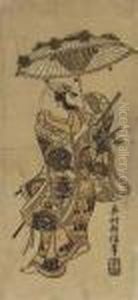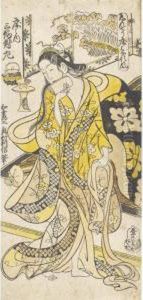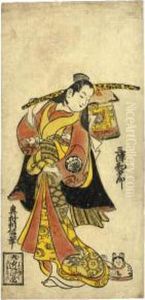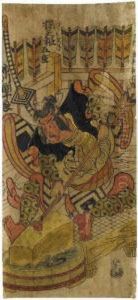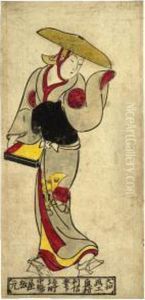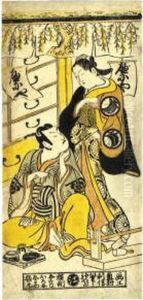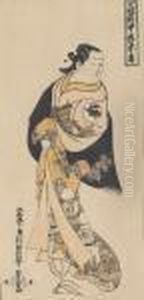Okumura Toshinobu Paintings
Okumura Toshinobu was a Japanese ukiyo-e artist known for his woodblock prints, born in 1686 and passing away in 1728. His life and career were situated in the Edo period, a time characterized by economic growth, strict social orders, isolationist foreign policies, and the enjoyment of arts and culture, including the flourishing of the ukiyo-e genre. Toshinobu was part of this vibrant art scene that depicted the 'floating world'—the pleasure quarters and theatre districts of urban Edo (modern-day Tokyo).
Toshinobu's work is less documented compared to the giants of ukiyo-e such as Hokusai or Hiroshige, but he made significant contributions to the development of the genre, particularly in the realms of bijinga (pictures of beautiful women) and yakusha-e (actor prints). His style is noted for its delicate lines and clear, bright use of color, which was innovative at the time and influenced the direction of ukiyo-e. Toshinobu was also known for experimenting with Western perspectives, a novelty in Japanese art at the time, which added a dynamic quality to his compositions.
Despite the scarcity of records about his personal life, Okumura Toshinobu's artwork provides insight into the cultural and social dynamics of Edo Japan. His prints, which often featured popular kabuki actors of the day or scenes from urban life, serve as valuable historical documents that capture the vibrancy and complexity of Edo society. Through his art, Toshinobu contributed to the evolution of ukiyo-e, bridging the gap between the traditional and the modern, and influencing future generations of Japanese artists. His death in 1728 marked the loss of a distinctive voice in the ukiyo-e tradition, but his legacy endures through the prints that continue to captivate art lovers around the world.
